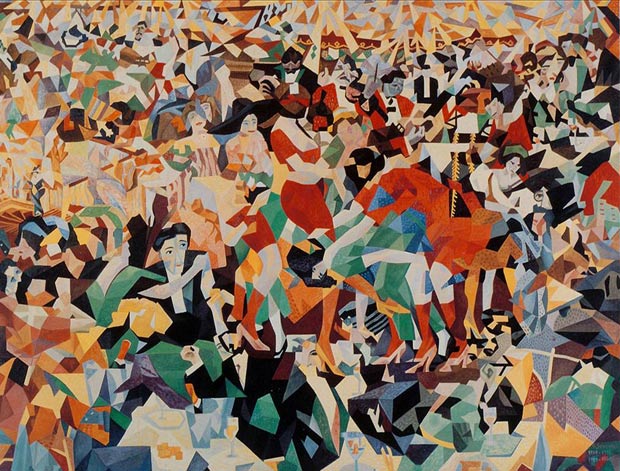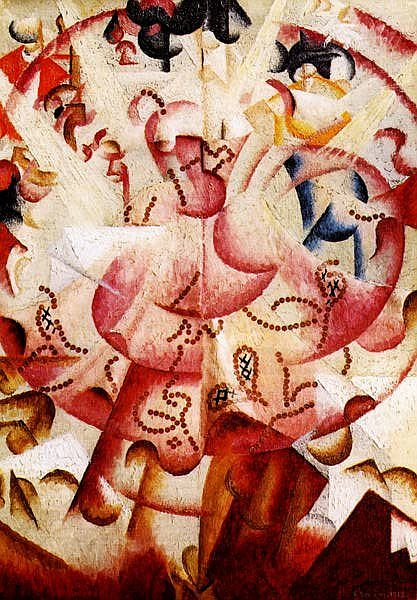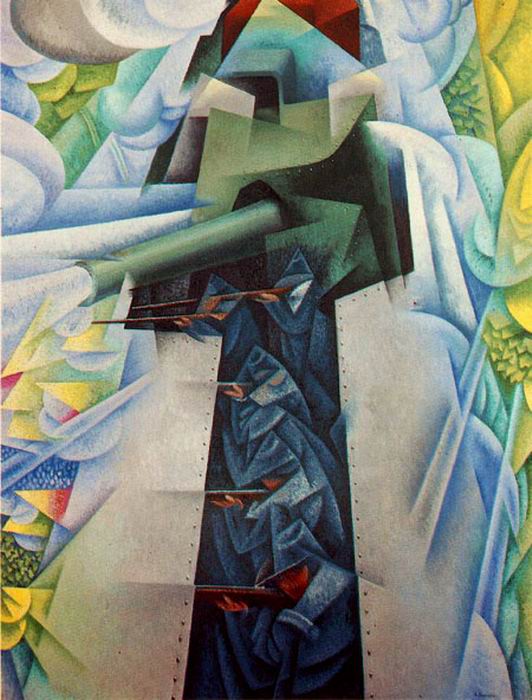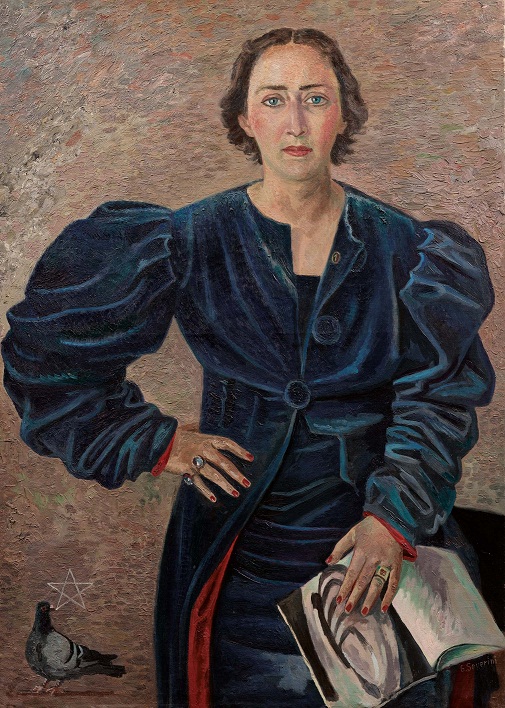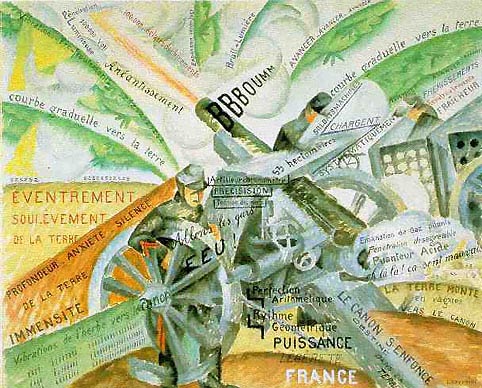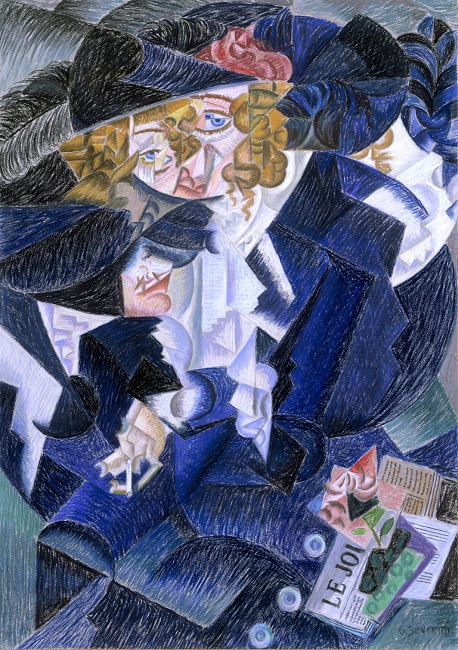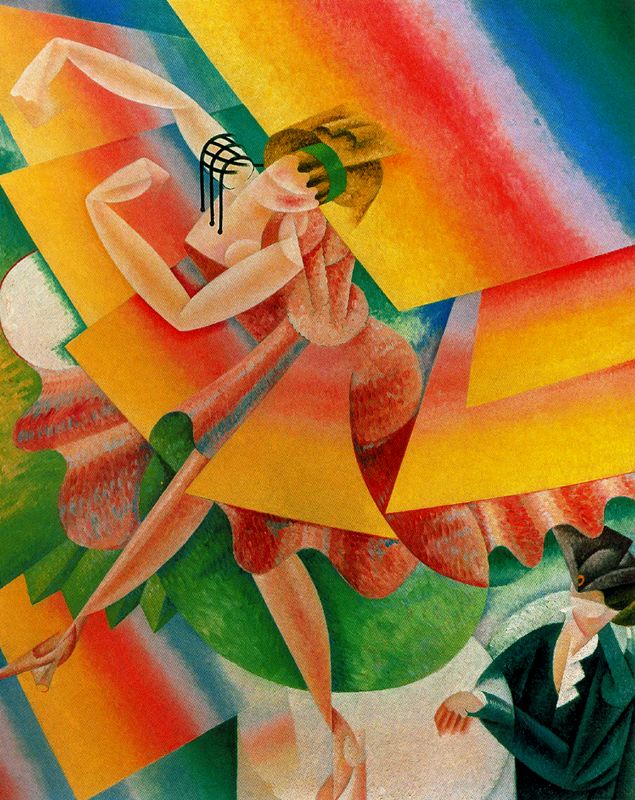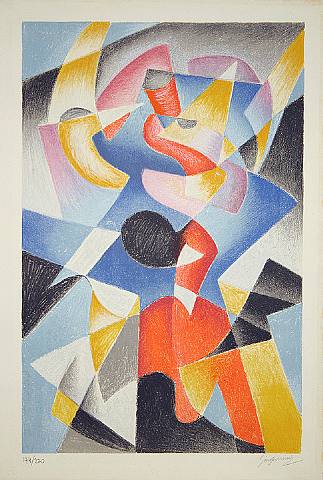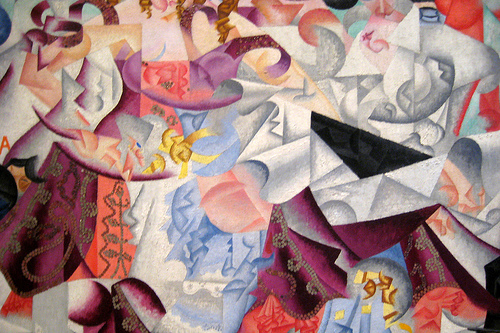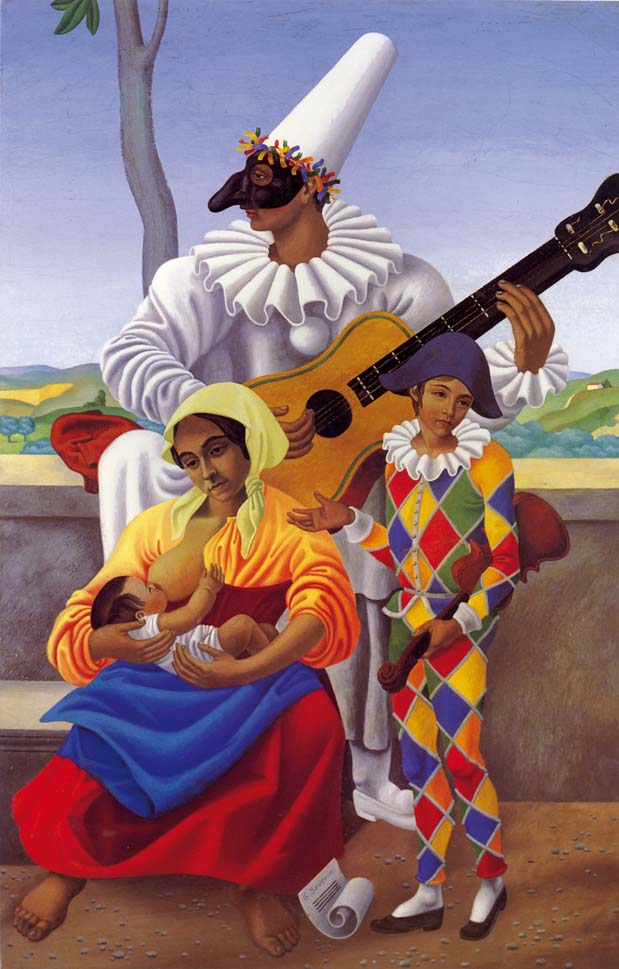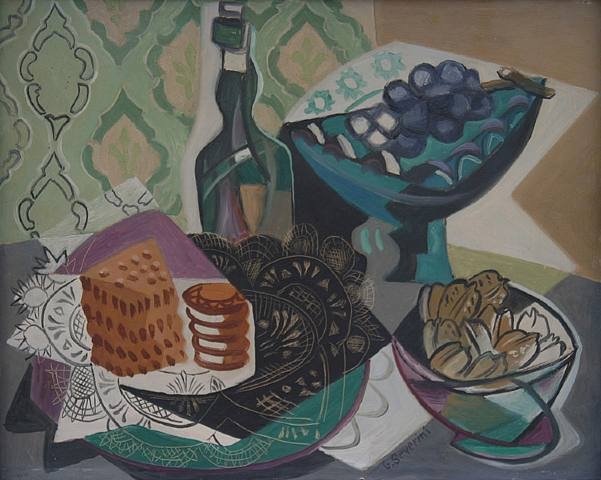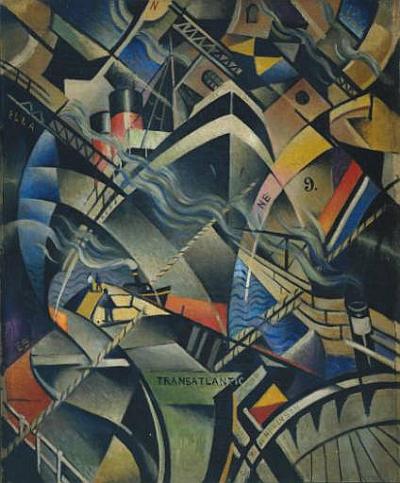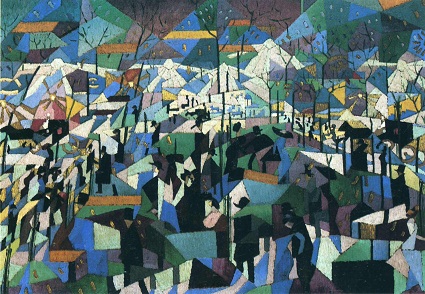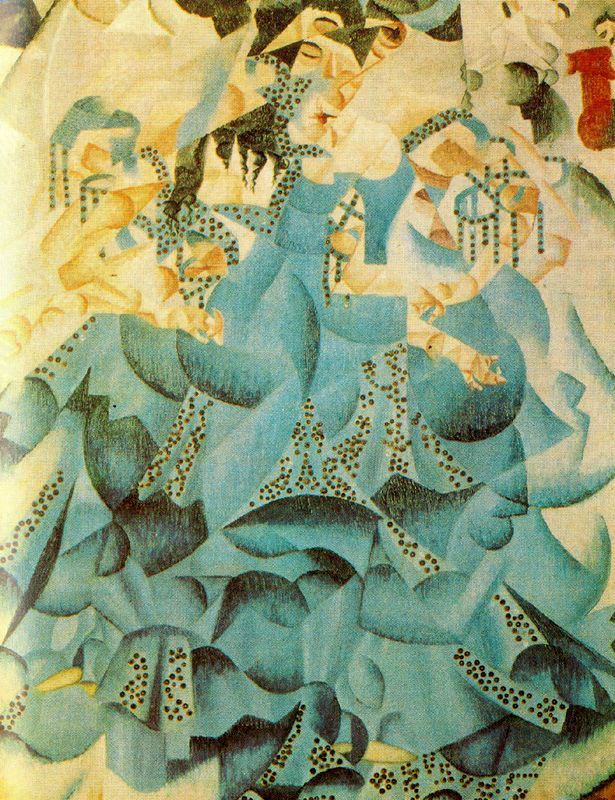<Back to Index>
- Painter Gino Severini, 1883
PAGE SPONSOR
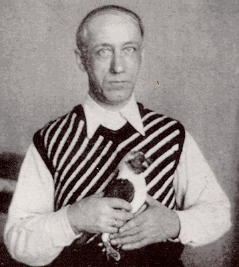
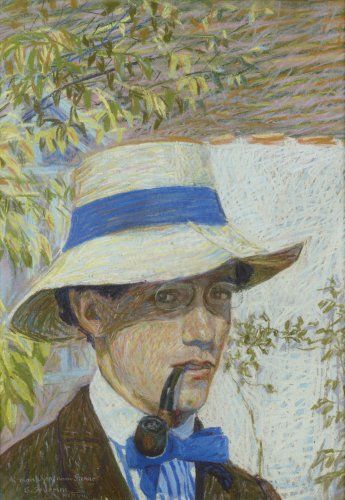
Gino Severini (7 April 1883 – 26 February 1966), was an Italian painter and a leading member of the Futurist movement. For much of his life he divided his time between Paris and Rome. He was associated with neo - classicism and the "return to order" in the decade after the First World War. During his career he worked in a variety of media, including mosaic and fresco. He showed his work at major exhibitions, including the Rome Quadrennial, and won art prizes from major institutions.
Severini was born into a poor family in Cortona, Italy. His father was a junior court official and his mother a dressmaker. He studied at the Scuola Tecnica in Cortona until the age of fifteen, when he was expelled from the entire Italian school system for the theft of exam papers. For a while he worked with his father. Then in 1899 he moved to Rome with his mother. It was there that he first showed a serious interest in art, painting in his spare time while working as a shipping clerk. With the help of a patron of Cortonese origins he attended art classes, enrolling in the free school for nude studies (an annex of the Rome Fine Art Institute) and a private academy. His formal art education ended after two years when his patron stopped his allowance, declaring, "I absolutely do not understand your lack of order."
In 1900 he met the painter Umberto Boccioni. Together they visited the studio of Giacomo Balla, where they were introduced to the technique of Divisionism, painting with divided rather than mixed color and breaking the painted surface into a field of stippled dots and stripes. The ideas of Divisionism had a great influence on Severini's early work and on Futurist painting from 1910 to 1911.
Severini settled in Paris in November 1906. The move was momentous
for him. He said later, "The cities to which I feel most strongly bound
are Cortona and Paris: I was born physically in the first,
intellectually and spiritually in the second." He lived in Montmartre and dedicated himself to painting. There he met most of the rising artists of the period, befriending Amedeo Modigliani and occupying a studio next to those of Raoul Dufy, George Braque and Suzanne Valadon. He knew most of the Parisian avant garde, including Juan Gris, Pablo Picasso, Aurélien Lugné - Poë and his theatrical circle, the poets Guillaume Apollinaire, Paul Fort and Max Jacob, and author Jules Romains. The sale of his work did not provide enough to live on and he depended on the generosity of patrons.
He was invited by Filippo Tommaso Marinetti and Boccioni to join the Futurist movement and was a co-signatory, with Balla, Boccioni, Carlo Carrà and Luigi Russolo, of the Manifesto of the Futurist Painters in February 1910 and the Technical Manifesto of Futurist Painting in April the same year. He was an important link between artists in France and Italy and came into contact with Cubism before his Futurist colleagues. Following a visit to Paris in 1911, the Italian Futurists adopted a sort of Cubism, which gave them a means of analyzing energy in paintings and expressing dynamism. Severini helped to organize the first Futurist exhibition outside Italy at Galerie Bernheim - Jeune, Paris, in February 1912 and participated in subsequent Futurist shows in Europe and the United States. In 1913, he had solo exhibitions at the Marlborough Gallery, London, and Der Sturm, Berlin.
In his autobiography, written many years later, he records that the Futurists were pleased with the response to the exhibition at Galerie Bernheim - Jeune, but that influential critics, notably Apollinaire, mocked them for their pretentions, their ignorance of the main currents of modern art and their provincialism. Severini later came to agree with Apollinaire.
Severini was less attracted to the subject of the machine than his
fellow Futurists and frequently chose the form of the dancer to express
Futurist theories of dynamism in art. He was particularly adept at
rendering lively urban scenes, for example in Dynamic Hieroglyph of the Bal Tabarin (1912) and The Boulevard (1913). During the First World War he produced some of the finest Futurist war art, notably his Italian Lancers at a Gallop (1915) and Armored Train (1915).
After 1920 he divided his time between Paris and Rome.
Severini abandoned Futurism after the First World War and was part of the "return to order", becoming interested in a more conservative, analytic type of painting and making a study of Giotto. For a time he worked in a Synthetic Cubist mode, but with the publication of Du cubisme au classicisme in 1916 he departed from Cubist purism and adopted a neo - classical style with metaphysical overtones. By 1920 he was applying theories of classical balance based on the Golden Section to figurative subjects from the traditional commedia dell'arte.
In 1923 he took part in the Rome Biennale. He exhibited in Milan with artists of the Novecento Italiano group in 1926 and 1929 and in their Geneva
exhibition of 1929. From 1928 he began to incorporate elements of
Rome's classical landscape in his work. In 1930 he took part in the
Venice Biennale, exhibited in the Rome Quadrennials of 1931 and 1935,
and in 1935 won the first prize for painting, with an entire room
devoted to his work. He contributed a cycle of works to the Paris
Exhibition. He explored fresco and mosaic techniques and executed murals in various media in Switzerland, France and Italy.
In the 1940s Severini's style became semi - abstract. In the 1950s he returned to his Futurist subjects: dancers, light and movement. He executed commissions for the church of Saint - Pierre in Freiburg and inaugurated the Conségna delle Chiavi ("Delivery of the Keys") mosaic. His mosaics were shown at the Cahiers d'Art gallery in Paris and he participated in a conference on the history of mosaic at Ravenna. He received commissions to decorate the offices of KLM in Rome and Alitalia in Paris and took part in the exhibition The Futurists, Balla - Severini 1912 – 1918 at the Rose Fried Gallery in New York. In Rome he reconstructed his Pan Pan Dance mosaic, which had been destroyed in the war. He was awarded the Premio Nazionale di Pittura of the Accademia di San Luca in Rome, exhibited at the 9th Rome Quadrennal and was given a solo exhibition at the Accademia di San Luca.
Throughout his career he published important theoretical essays and books on art. There is an autobiography, The Life of a Painter.
Severini died in Paris on February 26, 1966, aged 82. He was buried at Cortona.
